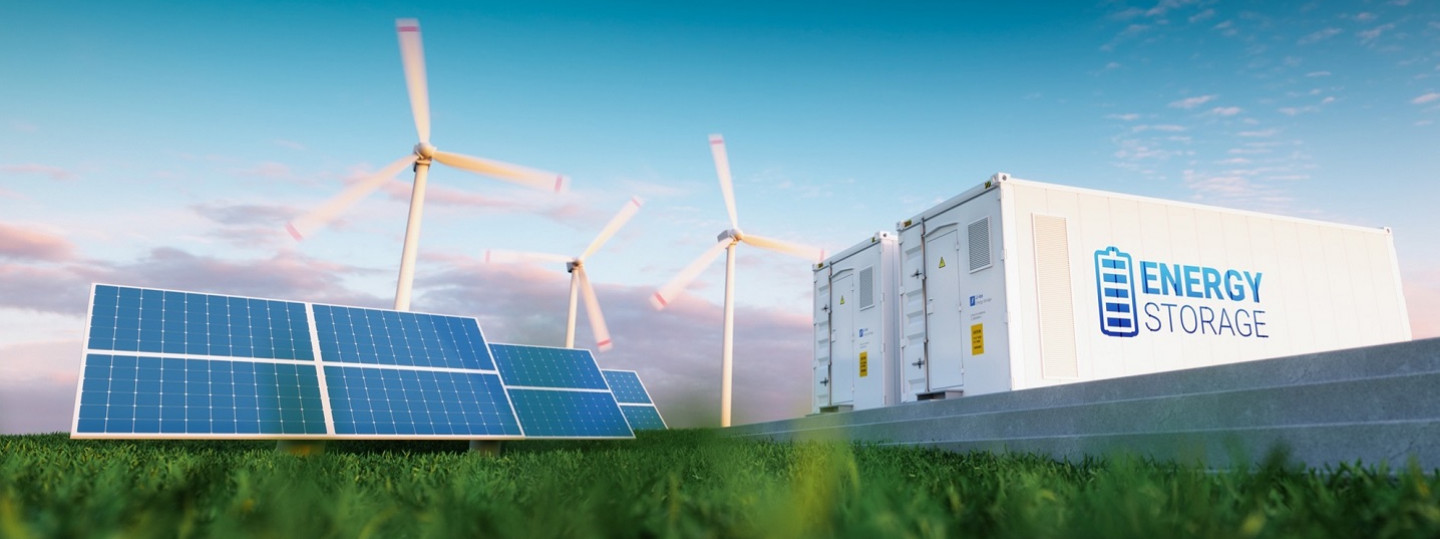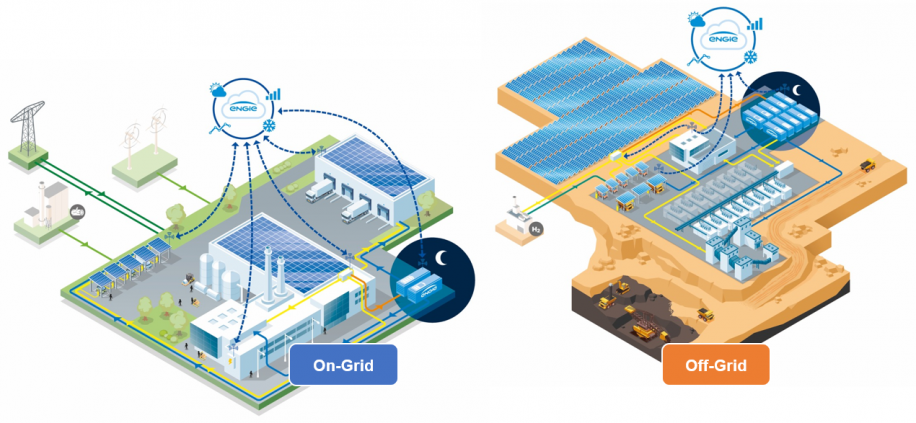
Flexisun® as a new solution: On-site photovoltaics and battery storage in one
The Flexisun® system is ENGIE's innovative answer to a well-known renewable energy problem. In this article, you will learn what the concept is all about and how companies and organizations benefit from the advantages.
Why sun rays (unfortunately) can't be bottled
Hundreds of years ago, people certainly associated the rising sun on the horizon with something hopeful: The celestial body provided warmth and gave new light to the day. In this way, our star symbolized security and the future - and in principle, the sun still does this today. As a relevant component of a sustainable, future-oriented energy supply, the sun, being the biggest source of energy on earth, is more important to us humans than ever before. By means of photovoltaics (PV), among other things, companies, organizations and public institutions are replacing fossil fuels and thus contributing to the decarbonization of our society.
But there's a problem: While coal-fired power, for example, is in principle available at all times, renewable energies are not. As soon as the sun doesn't shine or the wind doesn't blow, no new electricity is generated. So with photovoltaic systems alone, organizations and companies cannot cover their electricity needs at night or in unfavorable weather conditions. Nor can they reliably cushion power peaks (peakshaving) with temporarily above-average electricity demand.
Availability due to time of day and weather conditions is a known weakness of many renewable energy technologies. It is therefore all the more important to find intelligent - and above all economical - workarounds. In this regard, storage technologies such as batteries play a key role.
Resilience and Independence: Why Storage Technologies are Gaining Relevance
Renewable energies are essential for public institutions, industrial plants and companies that are on the path to zero carbon. However, relying solely on public networks is a risky decision for the future. The urgency to decarbonize, volatility of the energy markets, enormous price fluctuations and regulatory challenges and increasing electrification are just a few of the factors that need to be mentioned in this context. The fundamental question is how companies and organizations can make themselves less dependent on volatile markets. Which technologies do they want to equip themselves with and which supply relationships make sense?
There are no universal answers to these questions. However, no matter how the future supply scenario and energy portfolio is designed in the individual case, storage technologies are a sensible supplement to existing decarbonization measures in any case. Batteries solve the known weak point of renewables and allow electricity to be "durable" through the night and bad weather phases. Furthermore, they have the ability to react within milliseconds in both ways, generating and consuming electricity. Batteries thus contribute to a reliable supply of clean electricity - at all times.
Storage Technologies Shape the Future of Energy Supply
On-Site solutions, especially for photovoltaics - i.e. own PV systems on the clients’ premises, whether rooftop, carports or ground-mounted - are interesting for all companies and organizations that want to reduce both their carbon emissions and their energy cost, and increase their resilience and energy independence. With their own electricity production, they make themselves self-sufficient from the markets and volatile factors. There are now many sensible and economical storage solutions that can be combined with common types of PV systems, provided the technical know-how is available. But to make it as easy as possible for public institutions, industrial operations and companies, we at ENGIE have developed the Flexisun® system.
Flexisun® - the all-in-one photovoltaic solution that brings energy flexibility
Flexisun® bundles on-site renewable technologies with battery storage. The concept allows companies, organizations and public institutions to be largely independent of grid power and to use self-produced electricity capacities even at night and in phases of unfavorable weather conditions. Flexisun® lowers peak demand and helps reduce CO2 emissions. In addition, electricity costs can be saved. Investing in a bundled PV and battery solution therefore more than pays off in the long term.
With Flexisun® , companies and organizations receive a powerful overall package of photovoltaic systems for the company premises (On-Site PV) and a battery storage system. During the sunny hours of the day, the solar panels produce electricity reliably, cost-effectively and independently of the grid. The plant operator can use the capacities directly in daytime operations. At the same time, the PV system charges the connected battery. It serves as a buffer system to compensate for the low-sun phases.
In addition, the Flexisun® system has a connection to the public power grid. There are two reasons for this: First, Flexisun® does not waste excess electricity once the battery is fully charged. The capacities not needed then are fed into the public power grid. The batteries can participate in grid services such as frequency regulation or balancing the grid to generate more revenues, depending on the business model. On the other hand, the grid connection acts as a safety factor: If the capacity of the battery is not sufficient to cover the power demand in the phases when the sun is not shining, Flexisun® automatically switches to the purchase of replacement power from the public grid. This ensures that the load is covered at all times.
The advantages of Flexisun® at a glance
Whether for companies, public institutions or industrial plants - the Flexisun® system is a simple, smart and modular solution for decarbonization. Thanks to the energy-as-a-service model, our customers do not have to take care of anything themselves. They can continue to focus on their core business and benefit from a risk-free solution with no upfront investment. They don't even have to buy or install solar panels themselves. Planning, installation, financing as well as operation and maintenance are included in the service and are carried out by ENGIE. As a rule, the power purchase from the plants is regulated via a contemporary power supply contract - a so-called Power Purchase Agreement (PPA). Instead of investing a lot of time and money to implement their own solutions, Flexisun® thus represents a great, economical overall package. It makes companies ...
- more self-sufficient: Flexisun® grants companies and public institutions more independence from energy markets, contributes to decarbonization, and protects against grid failures and volatile effects.
- more economical: Flexisun® offers long-term favorable and price-stable green power supply contracts. The financing and operation of renewable energy technology is included. Companies and public institutions save time as well as money.
- more sustainable: Flexisun® is a great solution to realize decarbonization efforts quickly and easily with a robust on-site system.
- more flexible: Flexisun® is scalable at any time and can be linked with other clean energy systems. For example, EV charging stations can be integrated on the site without great effort in order to supply the electric vehicle fleet with energy via Flexisun®. Heating and cooling systems are also conceivable.
- more efficient: Thanks to our own intelligent energy management system, energy flows can be optimally controlled in real time - for the current and future needs of our customers.
An innovative concept: Flexisun® conquers the world
The Flexisun® solution is already implemented at the premises of several C&I clients around the world, in Europe, North America and Asia-Pacific. Overall, Engie now supplies over 1,000 sites in more than 15 countries with On-site PV stand alone solutions, or with combined Solar + Battery Storage Flexisun ®. Are you interested in Flexisun or in On-site photovoltaic solution? Then let the energy experts at ENGIE advise you. We look forward to hearing from you!
Our Expert













